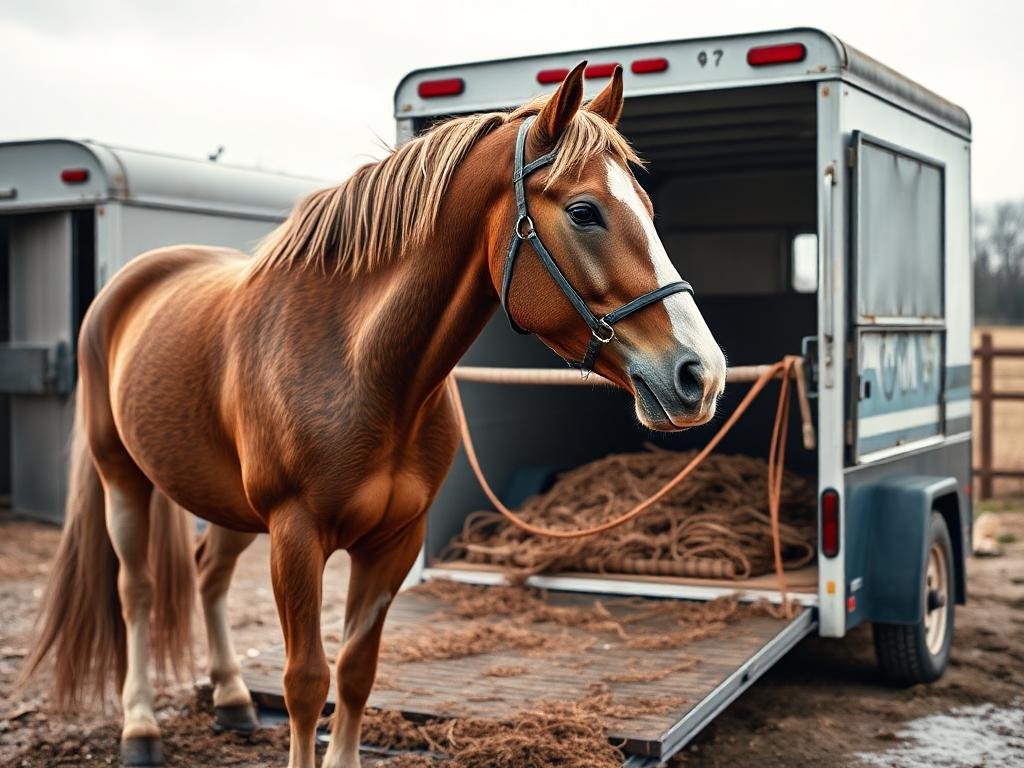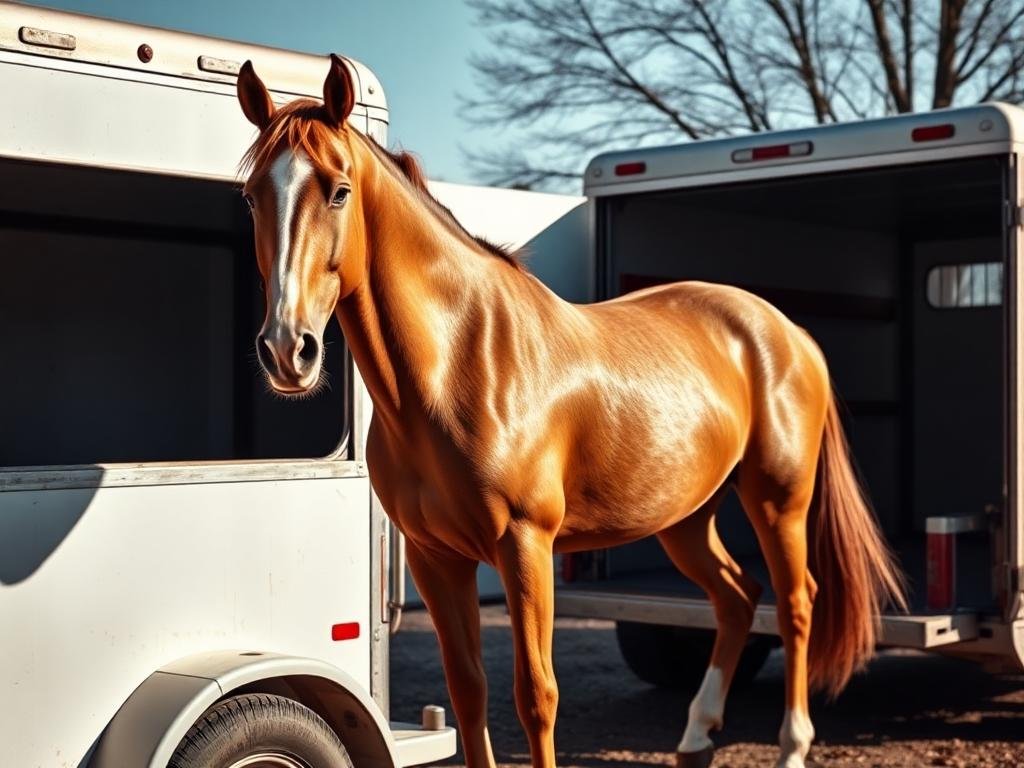Daturing Horse Safely is another important feature of using horses, may be for shows, competitions, or veterinary procedures. An effective trailer design and correct loading procedure can be critically compensating factors while traveling with a horse. This blog focuses on the four major areas of using a horse trailer, set and point out guidelines for safe, comfortable, and efficient hauling.
Table of Content
- Prioritizing Safety
- Selecting the Right Trailer
- Preparing Your Horse for Travel
- Ensuring Comfort During Transport
- Driving with a Horse Trailer
- Unloading Your Horse Safely
- Conclusion
- FAQs
Prioritizing Safety
2. Safety First
In any travel with your horse, you need to ensure safety. It is required to inspect both your vehicle and the trailer closely enough. To do it you need to inspect hitch, tires, brakes and lights while on the other you need to look at tongue jack, stabilizer jacks, water electrical, LP gas, specified tires, and safety chains. Also, examine the inside part of the trailer particularly the floor for signs of wear or tear that may lead to Ack hazards during transportation.

2. Proper Loading Techniques
Correct horse loading is very crucial. Ensure that the ramp is in a trailer with a low gradient to reduce on cases of slipperiness and falling over. Check the condition of the surface – it should twisted enough: additions like bedding, for example, shavings will increase the coefficient of adhesion and decrease the capacity to collect humidity. It must always be done in an adequately lit place with good surface to avoid cases of people falling over.
Selecting the Right Trailer
Types of Trailers
The common kinds of horse trailers include the straight-load, the slant-load, and the stock type. Each design has its advantages:
- Straight-load trailers: Especially for horses that do not move much when the vehicle is on the road.
- Slant-load trailers: Permitted to be placed in more natural ways; it is easier for the horse to get into.
- Stock trailers: It boasts very good ventilation and may lack some additional safety touchings that are observed in other horse trailers.
The things you should try and consider when choosing a trailer include the size of your horse, temperament and the frequency of traveling.
Preparing Your Horse for Travel
1. Training Your Horse
There are several important things one should consider before getting a horse to a trailer they include the following; A horse placed in a trailer should be trained to stand tied and should not be stressed. It is advice to familiarize them with loading and unloading by practicing at home. It will be helpful to use positive re-enforcement to get your horse into the trailer of his own accord.
2. Equipment Considerations
When tying your horse to the trailer use a breakaway halter or leather halter so that your horse will not get hurt if they spazz out or topple over. Do not use rope halters as they present many hazards during moving the cattle. More to that, there is the need to use leg protection like shipping boots or wraps to help incidences of sudden stops or changes in body weight.
Ensuring Comfort During Transport
1. Ventilation and Temperature:
Horses are gentle animals that get easily stressed up when confined in poorly ventilated areas. Make sure that your trailer has enough ventilation with ventilation points at several positions. For horse trailers there are some fans that you can use particularly during hot weather to cool your horse. Winter period requires an adequate blanketing of this animal to keep warm in case of cold months.
2. Bedding Choices
Proper beds also give comfort to patients in addition to that it also helps in minimizing droppings of wastes during traveling. It is suggested that larger-chip shavings from soft woods such as pine or fir will offer more adherence and less… It is also useful to wet your bedding down before loading so that less dust can gather to potentially harm your horse’s lungs.
Driving with a Horse Trailer
1. Defensive Driving Techniques
Always, always exercise caution when you are out on the road toting a horse trailer. Keep a safe distance from other cars or animals, and never stop suddenly to hurt your horse or swerve suddenly that the horse may become spooked[3]. As mentioned before, your trailer will impact braking distances; always consider that when driving.
2. Smart Parking Choices
While stopping at a destination select a flat surface, free from a lot of traffic movements. This reduces a lot pressure on both you and your horse especially when you are off loading with your horse. There should always be a close check to the environment in order to eliminate any obstacles that may hinder easy unloading for instance intervals of loose gravel or mud.
Unloading Your Horse Safely
Before, unloading ensure that your horse is untied and the environment is free from any form of hindrance. When approaching the trailer reverse the horse into the trailer then slowly open the trailer doors so that the horse does not get spooked. When employing a ramp it is wise to make sure it is firmly anchored and placed in the proper angle for your horse to slip out.
Conclusion
It is important to pay numerous considerations while hosting horses since their transport might be at risk. Every aspect of choosing the right trailer, how the horse is secured, and how comfortable the rider must be during transportation is vital in its successful and safe trip. It may not be a secret that adhering to simple rules and ensuring safety rules are met makes every trip an enjoyable one.
FAQs
1. When you trail your horse, what type of halter should you put on?
Alongside, use a breakaway halter or a leather halter to slash out increases in the event your horse panics.
2. When should I inspect my trailer before using it?
Before the start of every journey, make sure to check the important parts and guaranty that they are working well.
3. What is the appropriate bedding to Lay in my horse’s trailer?
The type of carving that is undertaken using these tools identifies the size of chips that are shaved off by the softwoods such as pines or fir as being more appropriate in as much as they provide the much needed traction and operator comfort.
4. Looking after the health of your horse during hot weather travel: How do I cool my horse?
They should also make sure the trailer is well-ventilated; efficiencies made for transporting horses is recommended.
5. what should I do when my horse refuses to load in a trailer?
They should involve positive reinforcement loading techniques in their home until they feel okay to get to the trailer.
Thus, if you follow all those guidelines of safe trailering practices provided above, you and your horse will have only pleasant rides together on every trip.



One Response